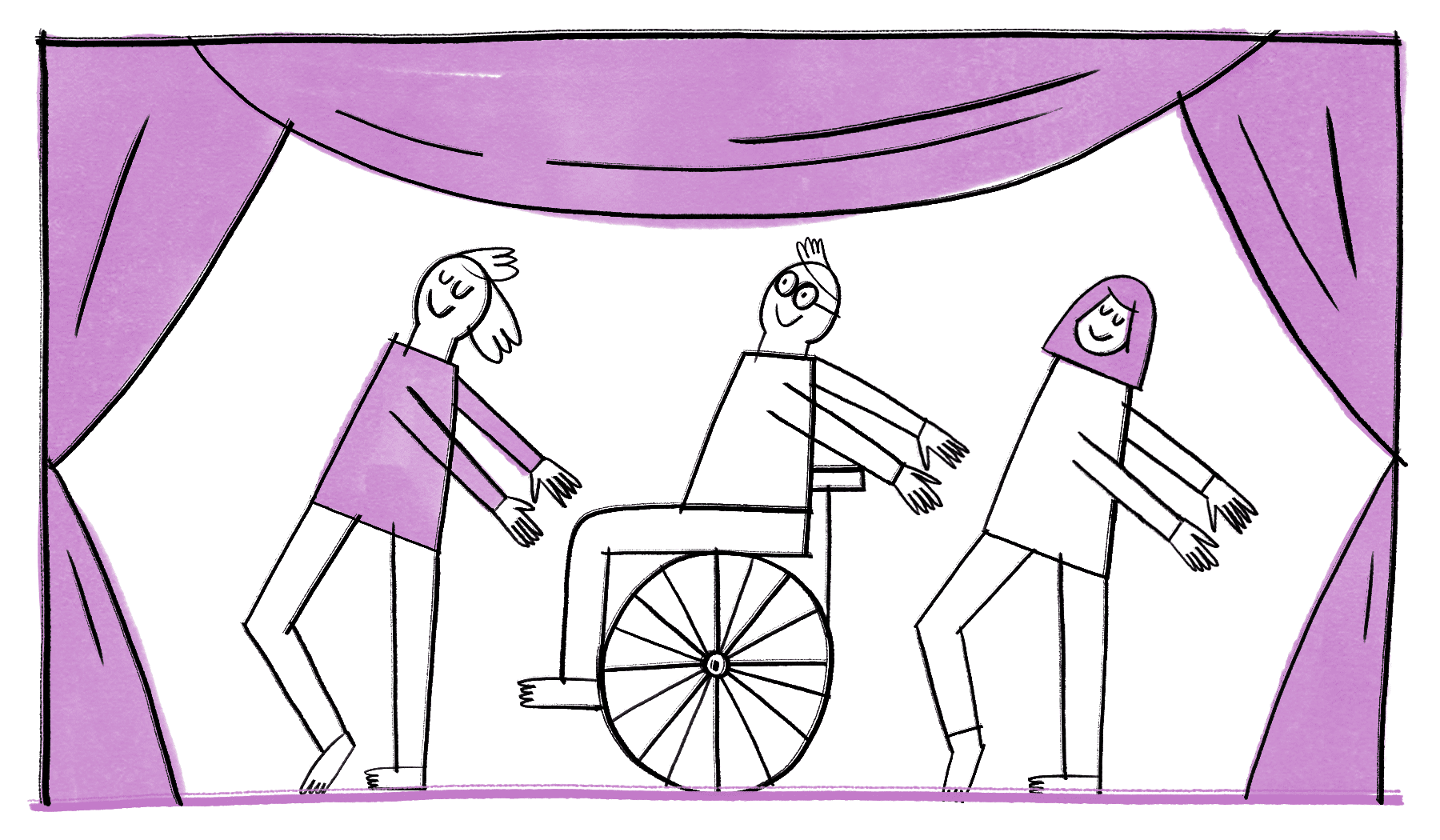

Let our examples inspire you and give you the freedom to experiment with diverse formats too.
Choose a presentation form that fits your class and your choreographic material.

Every dance project deserves a proper presentation at its conclusion too. Since presentations can take on a range of forms, it makes sense for you to already align your concept with your preferred presentation form during the course of the project. Here we give you an overview of the various possibilities and formats for a performance and show their respective unique characteristics and challenges for those involved.
A thematically developed choreography featuring a fixed and rehearsed structure is presented in a school or theatre setting.
After going through the ups and downs of the creative process, students experience moments of high intensity and concentration on stage. They recognise how their actions resonate positively and immediately with the audience. The potential magic of a stage performance can remain in students’ memories as an unforgettable experience.
The class invites another school class and/or their parents to come and watch an open rehearsal. Here they can dance in front of an audience without having to live up right away to the demands of a stage performance. In the context of an exemplary lesson, students demonstrate their experiences with dance, such as warm-up exercises, development and mastery of movement sequences and improvisation exercises. You can fix the structure and contents of the lesson beforehand and rehearse it or you can just let it unfold in the here and now.
Since the students probably know most of the audience, they have to overcome any anxiety about embarrassing themselves or appearing uncool. They learn how to act and react in front of a live audience and perhaps also how to tackle exercises with an attitude of open-mindedness towards all potential results.
A lecture demonstration lends itself to showing aspects of the work that don’t fit into a conventional format. For instance, you can present viewers with lines of questioning regarding your topic(s) or ideas for developing a piece. The dramaturgy of the lecture demonstration should be approached in such a way that the audience is able to easily grasp connections and context. Students can take over moderation duties to assist in this regard. As with the open rehearsal, students experience what it is like to act in front of an audience and work through exercises with an open attitude regarding potential results.
Places such as museums, subway stations, streets or theatre foyers can serve as inspiration. Together with students, you develop movements and poses that react to the specific characteristics of these spaces, and subsequently perform your choreography there as well. Since places like these seldom feature a clear separation between stage and audience, students should be made aware of where the audience will be positioned beforehand. Frequently it happens that the students in such a situation are surrounded very closely by audience members or even that the two groups are intermixed. The attention level of the audience can also vary greatly from that of a classic stage performance.